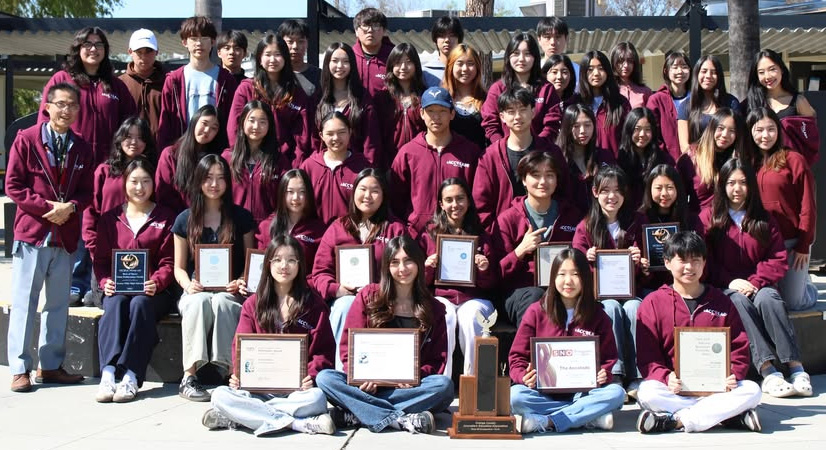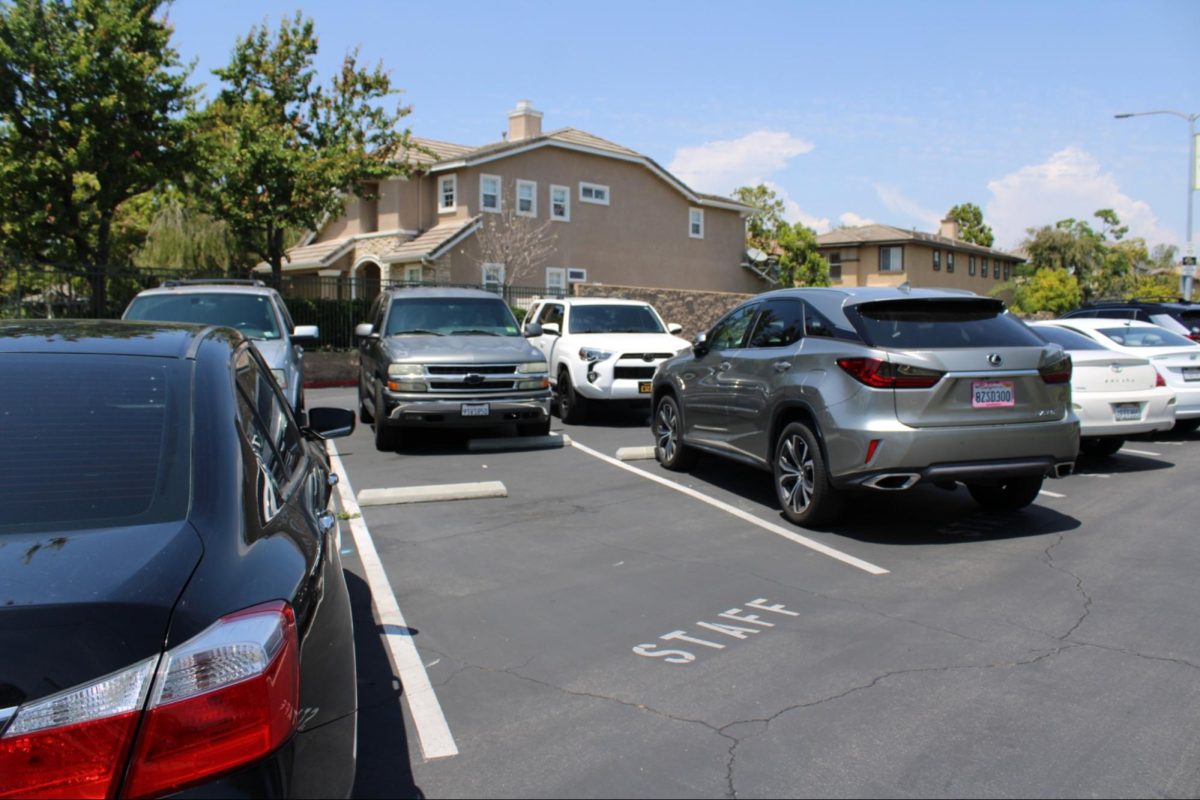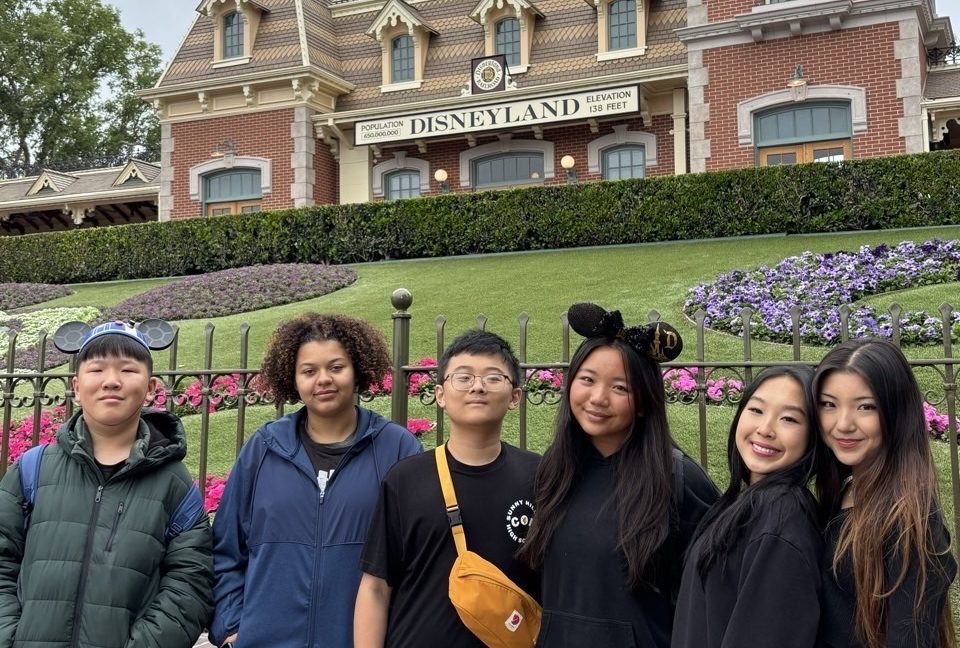
HEAD TO HEAD: Apple vs Android?
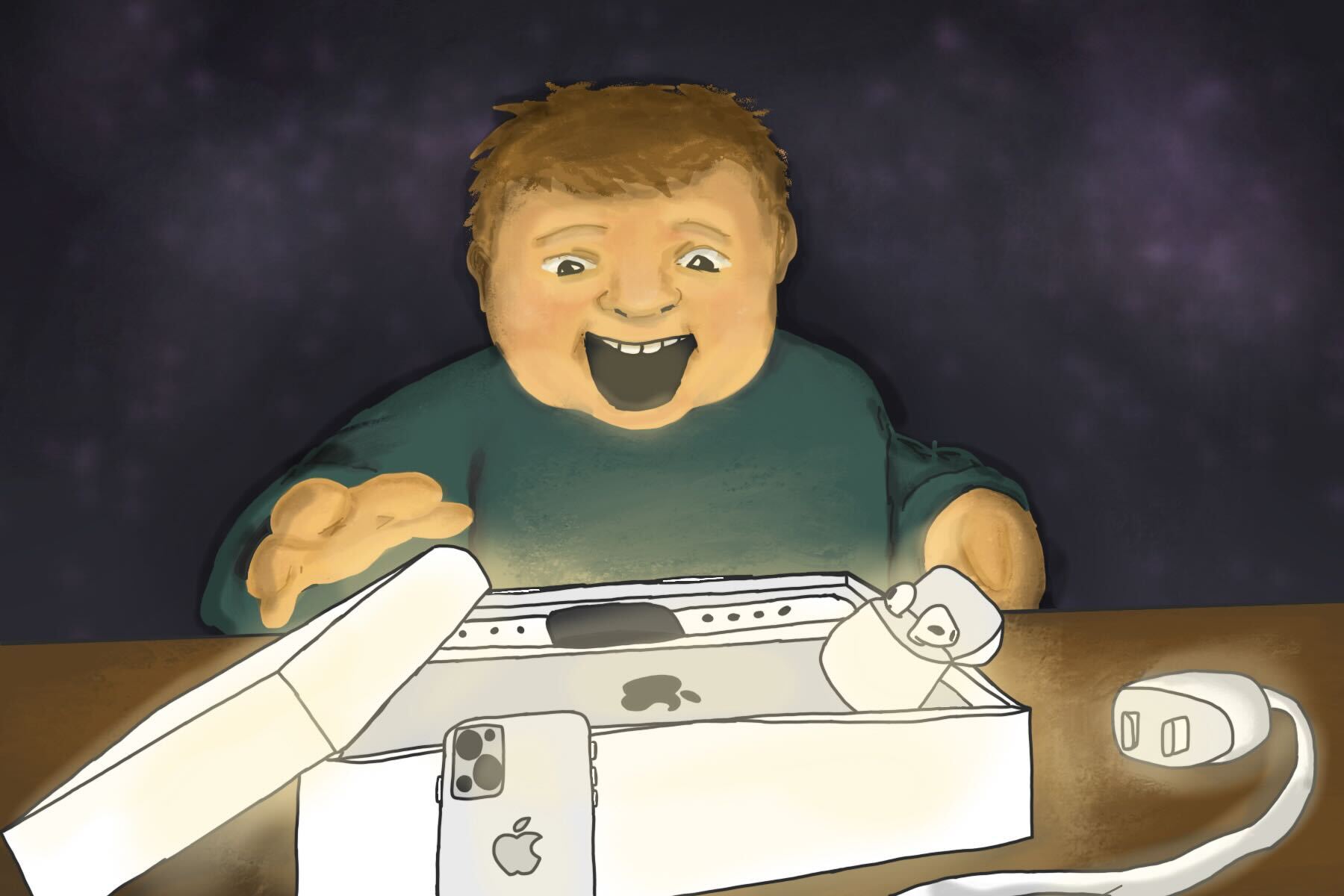
Every morning, two distinct sounds wake me up.
In my room, the familiar sound of an Apple alarm rings. On the other side of my wall, the sing-song melody of my dad’s Android phone starts his morning.
Though under the same roof, my dad and I navigate digitally in separate ways. As an Apple enthusiast since 2019, I often share a friendly argument with my dad, an Android user, regarding which is the better device — I argue for the former.
Compared to Android devices, Apple is more user-friendly and extremely easy to use.
For instance, my favorite feature of iOS devices is Airdrop.
Whether it would be moving files from my iPhone to Macbook within seconds, or sending classmates near me a picture of the homework written on the whiteboard, Airdropping makes my life so much easier — once I Airdrop a photo, it instantly pops up in my photos to access.
Moreover, Android features an open platform that accommodates full-on customization — users have total control over their smartphone’s settings and can utilize Google Play to execute them, according to makeuseof.com, one of the largest online technology publications on the web.
Therefore, Android devices are inconsistent, as the customization feature changes the look and feel of the user interface, according to bluproducts.com, a website operated by Blu Products, a company that rebrands low-cost mobile phones.
This inconsistency leads to devices looking and feeling completely different from each other. As a result, operating Android devices requires technical proficiency, which may be a roadblock to older citizens such as my dad, who enjoys the photo quality of his Samsung phone.
After being an iOS user for four years, I’ve noticed that Apple devices have less customization options, meaning users won’t take long to learn how to navigate through their phones.
Though the ability to personalize one’s device may be beneficial, it makes using the devices complicated.
It’s not to say that Android devices aren’t user-friendly — the integration of the “back” button on such devices does allow users to quickly shift back to the previous screen, and I’ll admit, it’s convenient to move to previous apps.
However, when I have to use my dad’s phone at times, it always takes me a while to find the apps I want to use, as I have to scroll up to open this invisible drawer, which Apple doesn’t have, to search for my wanted app.
Peer pressure also holds an important role in this debate.
The biting question, “Ew, you have an Android?” is one I’ve heard multiple times at school. It seems as if owning an iOS device is the way to popularity.
Though reasons for this judgment may differ from person to person, I’ve noticed that my peers often make negative remarks about an Android device based on its design and, of course, the classic “green text messages.”
In addition, Apple’s most popular feature, Face ID, arguably gives it the upper hand in security and privacy.
Though Android devices recently implemented facial recognition, Apple’s Face ID proves to be far more advanced and secure. While Face Unlock, Samsung’s version of facial recognition, uses the front camera and scans for a “matching photo,” Face ID uses an entire system of sensors including a flood illuminator that projects 30,000 dots to map users’ faces in 3D — it’s a whole different level of security, according to phonearena.com, which has an audience of over 5 million monthly U.S. users.
Though both devices have this feature, I believe that many choose Apple’s Face ID because it has continuously improved since its first release on the iPhone X over 6 years ago.
As a result, Face ID is far more accurate than Android devices’ facial recognition, hypothetically making it more secure and efficient.
iOS devices’ superiority over Android gadgets doesn’t end at phones — Apple’s tablets, known as iPads, are often utilized by students and adults and are of better-quality visuals.
According to techradar.com, apps don’t look visually appealing on an Android tablet; when users download an app from the Play Store, it has both tablet and phone versions, but most developers don’t get much work into the tablet side of the Android app, making the apps look stretched out with blank space dominating the display.
Therefore, Apple’s advanced security and user-friendly devices prove that it is one step ahead of Android — and the better gift to receive.
When I start to earn my own money, of course, I will save up to buy my dad the newest iPhone.
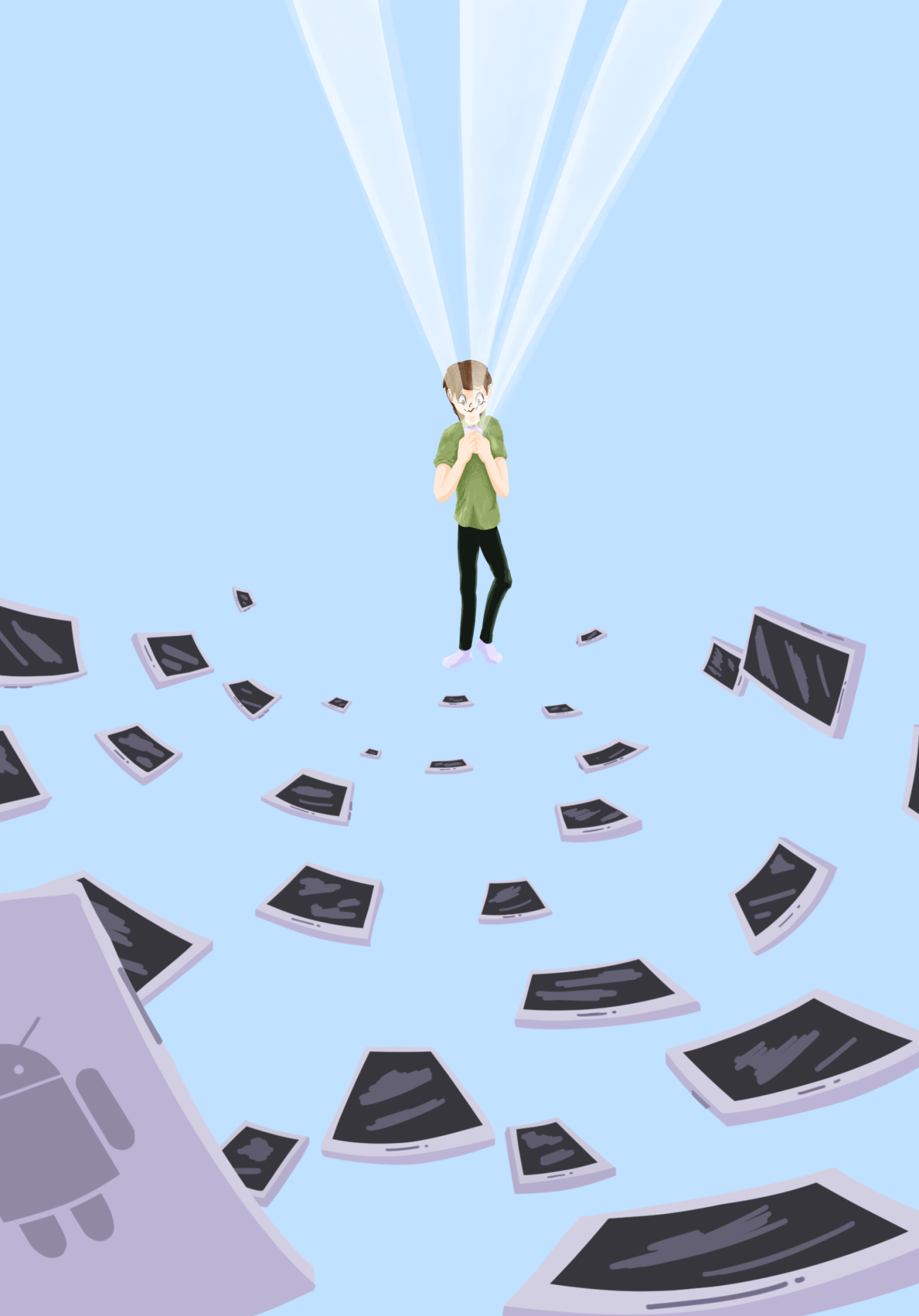
As early as 4 years old, I recall my parents using Android phones. They would often let me go on their devices to play mobile games and watch YouTube.
Although I don’t know exactly what brands they owned, I remember I started to notice some differences in their phones compared to the iPhones my older cousins, many of whom were either in middle school, high school or college at the time, allowed me to use.
But it was not until I entered third grade, that I had my first encounter with peer pressure regarding mobile operating systems. I was sitting on the school’s field with my friends during lunch when our conversation shifted to the topic of phone models.
In the group, several of them preferred iPhones, but the remark made by one of my friends really stuck out to me: “Androids are so trash, iPhones are much better than Samsungs.”
Although this wasn’t directed towards me or my parents, I had never experienced any type of hatred towards Androids until that moment. Since then I have heard several negative opinions shared by many classmates and friends about the phones, many of which were baseless assumptions built off stuff heard from the internet.
But despite the comments, I still strongly believe that Android phones have amazing qualities that cannot be found on iPhones.
During my seventh grade year, I finally received from my parents my first phone – a Google Pixel. Along with this device that I still own and use, I also own iOS products such as an iPad.
One of the biggest differences I noticed while scrolling through social media and discussing with other Android-using peers is the diversity between our phones. Throughout the hundreds of different Android models that exist, there are a wide variety of colors, styles, sizes and accessories.
When I was in eighth grade, I had a friend who owned a Samsung flip phone. During break, we would watch videos and play games on the phone, which was decorated with cute charms and stickers. I enjoyed my experience with the phone so much that I even considered switching over to it, but decided against it because my phone at the time was still new.
Along with flip phones, like the Samsung Galaxy Z Flip 5 and the Motorola Razr+, stylization options among Android phones include folds like the Google Pixel Fold or the Oneplus Open.
Some of my personal favorite color choices include the Samsung Galaxy Note 10 in the “Aura Glow,” featuring a shiny gradient of pastel pinks to blues, and the Huawei P20 Pro’s “Twilight,” in shades of dark blue and purple.
Along with a variation of physical features, Android phones also contain many unique system features.
A system feature unique to Android is the Pixel’s automatic music recognition feature. Unlike other phones, which may require a web search or a music recognition app to figure out the name of a song that may be playing in the background of a person’s current location, the auto recognition feature displays the name of any song playing on the Pixel’s lock screen by default.
Another feature only found on Android models is Motorola’s quick and easy access to the flashlight, requiring only two shakes to turn on the phone’s light. This makes the flash easily accessible, which can come in handy in dark areas.
But despite the great features Android phones have to offer, many people prefer those possessed by iOS devices and believe the latter is superior.
Among my anti-Android peers, one of the most relevant reasons for their detest of the phones revolved around the untrue notion that the images taken on them were of bad quality – worse than that of images taken on iPhones.
But between iPhones and Android phones, I prefer the images my camera produces, and I’m not alone in this thought.
While attending events with my family, I am my mom’s “designated photographer,” as she takes pictures with her friends. Often, her friends ask me to take these pictures with my mom’s Google Pixel as they favor the quality over their own iPhones.
The images taken through my phone always come out with sharp quality and vibrant colors which frequently surprises people who don’t know the potential of Android cameras.
Not only are there apparent differences in photo quality, but I’ve also noticed that, generally, iPhones are more costly than Android phones.
When I was talking with one of my iPhone-using friends earlier this school year, she complained about how her new iPhone 15 was way too costly for somethign so delicate, since the phone screen cracked within a week of her purchase.
Another iPhone-using friend has been using the same, cracked phone for several years but hasn’t gotten a new phone because of the expensive cost.
Talking with my Android-using friends, the high cost rarely comes up as many of our phones range under much cheaper than iPhones. For example, on the Google store, the Google Pixel 8 Pro is only $799 whereas on the Apple store, the iPhone 15 Pro is $999.
All in all, the quality and price of Android devices seem to be more appealing than those of iOS phones. Instead of aimlessly continuing to buy iPhones, more people should branch out to enjoy the benefits Android phones have to offer.
Your donation will support the student journalists of Sunny Hills High School. Your contribution will allow us to purchase equipment and cover our annual website hosting costs.



